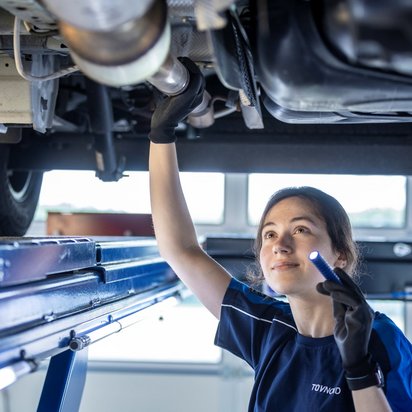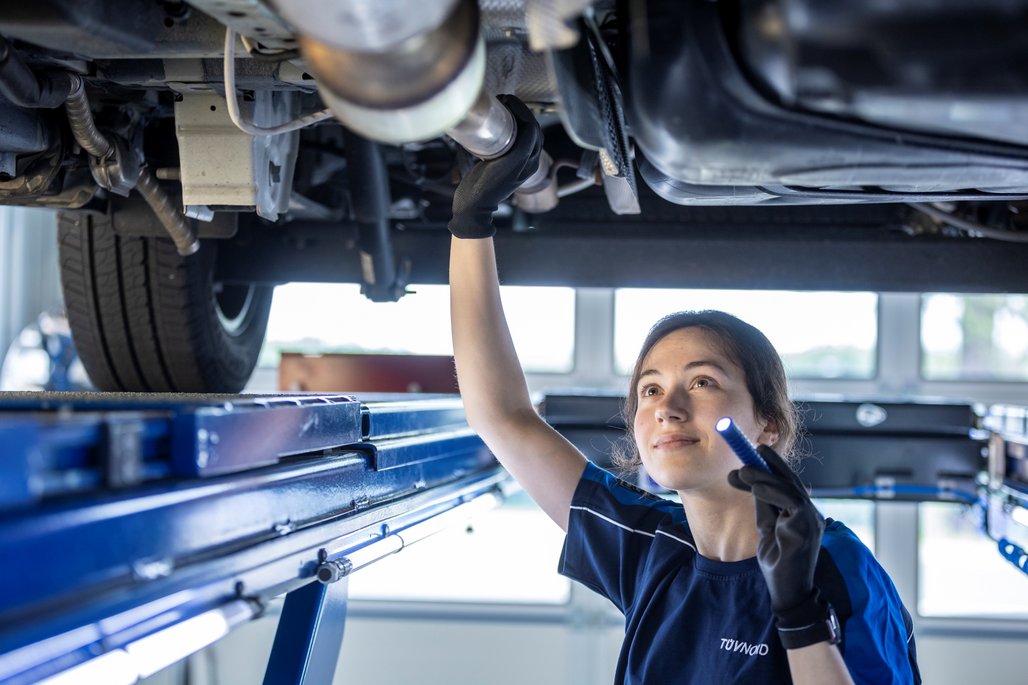Fewer defect-free vehicles at TÜV NORD stations
A clear trend in this year's TÜV report: the frequency of defects increases noticeably with age.

A clear trend in this year's TÜV report: the frequency of defects increases noticeably with age.

Germany's motorists are still travelling in vehicles that are predominantly technically safe - even though the number of defects has risen slightly. 59.4 per cent of all cars inspected at TÜV NORD stations were awarded the sticker without any faults, which is 0.8 percentage points less than in the previous year. 25.2 per cent of the vehicles had such significant defects that they had to be repaired before the new sticker could be issued.
Since May 2018, in addition to the familiar categories of "no defects", "minor defects", "significant defects" and "unsafe to drive", there has also been a fifth category, "dangerous defects". This is statistically categorised as a "major defect". A "dangerous defect" is present if a defect poses an immediate danger to traffic or a significant environmental impact - for example, if all the brake lights on a vehicle have failed. The AutoBild TÜV Report 2026 is based, among other things, on the evaluation of all main inspections carried out between June 2024 and June 2025 at more than 250 TÜV NORD stations and in over 10,000 TÜV NORD partner workshops.
Age of the vehicle fleet has an impact on the defect rate
A clear trend in this year's TÜV report: the frequency of defects increases noticeably with age. Vehicles that are ten years or older show an above-average number of safety-relevant defects - particularly in brakes, axle suspension and lighting. The average age of the vehicles presented at the TÜV NORD centres was 10.8 years. The increasing average age of the car population has a direct impact on road safety. The proportion of vehicles with significant defects increases significantly with each additional year: for three-year-old cars the proportion is around 6 per cent, for ten-year-old vehicles it is already 23 per cent, and for vehicles over twelve years old it is even around 28 per cent.
The main causes are material fatigue, worn components and electronic ageing. Plastic and rubber components lose their elasticity, cables and plug connections become susceptible to corrosion, brake lines can leak and malfunctions in ABS and ESP systems occur more frequently in older vehicles. In addition, many owners of older vehicles are less willing to maintain their vehicles: regular inspections are postponed more frequently for cost reasons, spare parts are more expensive or more difficult to obtain. This increases the risk of sudden breakdowns - for example due to defective lighting, brakes or engine controls
The independent and neutral main inspection is and remains a central pillar of road safety. It ensures that vehicles with technical defects are recognised and returned to the workshops. This mechanism plays a key role in ensuring that motorists regularly invest in the good technical condition of their vehicles - for the protection of all road users.
"The vehicle population in Germany is older than ever before. We also see this trend in the defect statistics," explains Hartmut Abeln, Managing Director of TÜV NORD Mobilität and member of the Group executive committee of the TÜV NORD GROUP. "Older vehicles can be technically reliable if they are regularly serviced and professionally maintained. However, with increasing mileage, the load and wear on safety-relevant components naturally increase. A sense of responsibility on the part of vehicle owners is therefore crucial. Those who take inspections and maintenance work seriously make an active contribution to road safety and sustainability - and at the same time ensure that their car remains reliable for longer."
Small car wins, many electric cars among the best
In the overall ranking, the Mazda 2 impresses with the lowest defect rates of all age categories and thus takes first place in the TÜV Report 2026, followed by the B-Class from Mercedes-Benz and the VW T-Roc. Electric vehicles are conspicuously strong this year: models such as the Mini Cooper SE, Fiat 500E and the BMW i3 are among the top 25 most reliable vehicles. Bringing up the rear in this year's evaluation is the Tesla Model Y, which has the highest defect rate in the age group comparison.
The TÜV report is published annually and is one of the most important guides for drivers and used car buyers. It is the result of all the main inspection results of the TÜV companies within a year and provides an overview of the condition of the individual car models, the safety of the entire German vehicle fleet and the problem areas of the cars. The magazine is available at every TÜV NORD centre and in newsagents for the price of 5.90 euros.
Founded over 150 years ago, we stand for security and trust worldwide. As a knowledge company, we have our sights firmly set on the digital future. Whether engineers, IT security experts or specialists for the mobility of the future: in more than 100 countries, we ensure that our customers become even more successful in the networked world.
